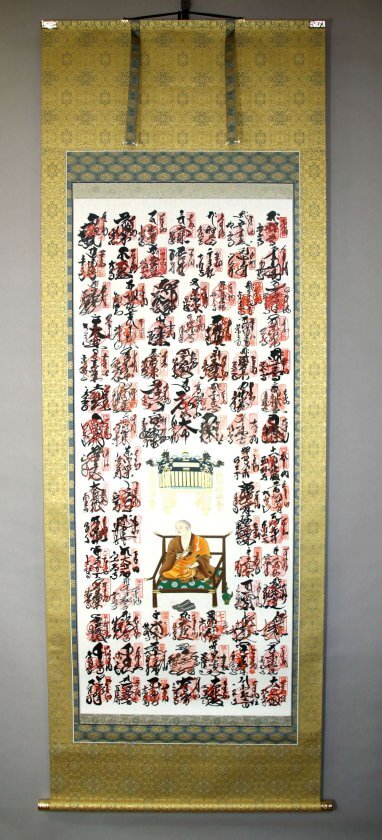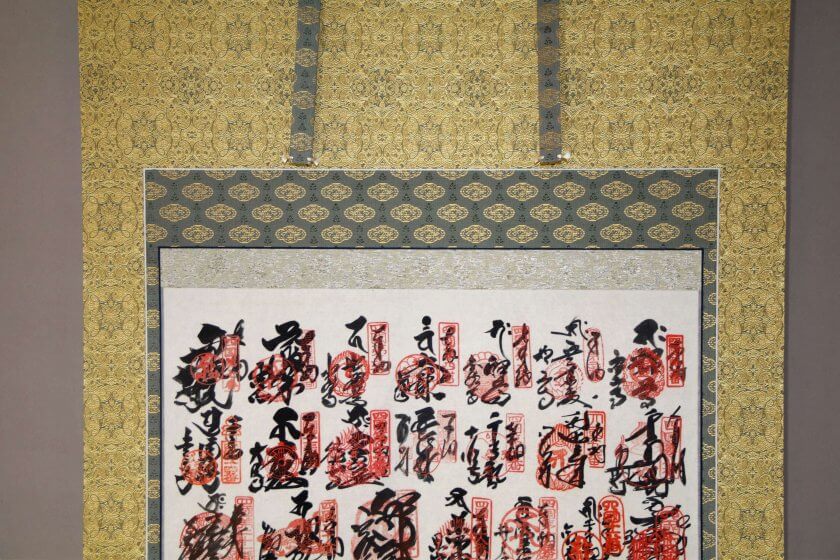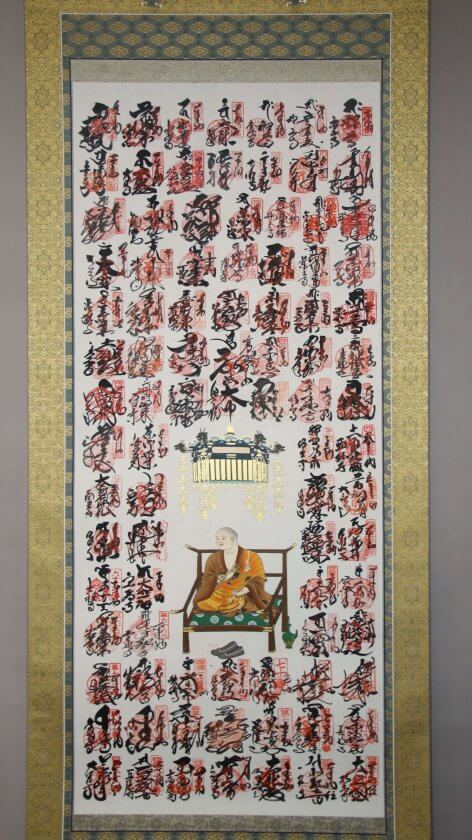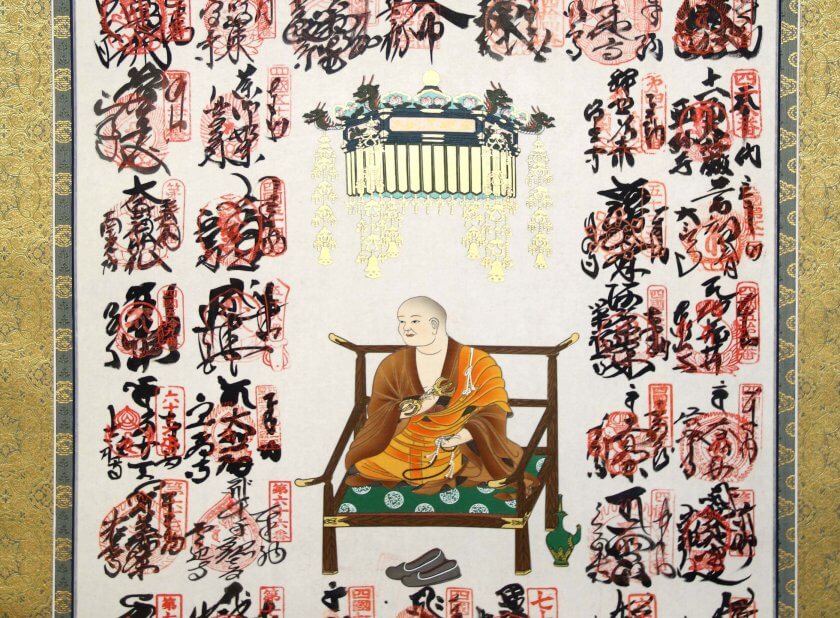Request for Shikoku Pilgrimage Kakejiku (hanging scroll) from a Swiss Client
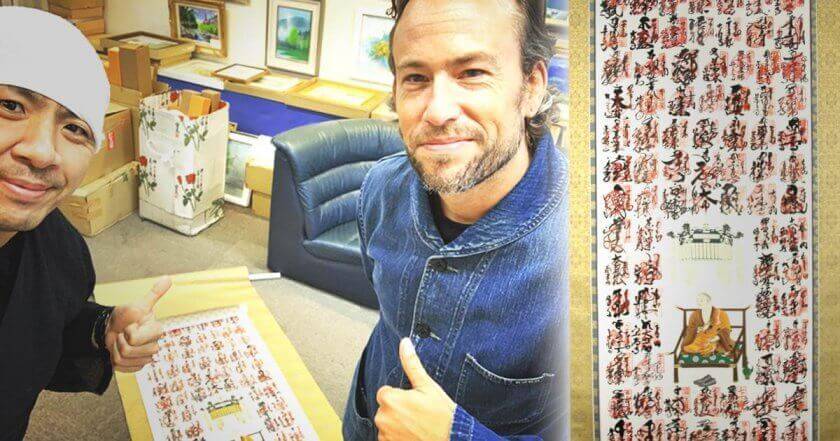
Contents
A Client Visited All the Way from Switzerland!!
This time, our story is about a request for mounting a Shikoku Pilgrimage kakejiku.
Going on a pilgrimage to these temples to collect the goshūin (red seal stamp) of each temple having it written on the main work of the kakejiku then mounting it to finish is the making procedure.
Much to our amazement, we received a request of this Shikoku Pilgrimage kakejiku from a Swiss client this time.

We take quite a lot orders from foreign clients but still the visit of a client, who brought in and requested us to mount a Shikoku Pilgrimage kakejiku for the first time, was rather exciting.
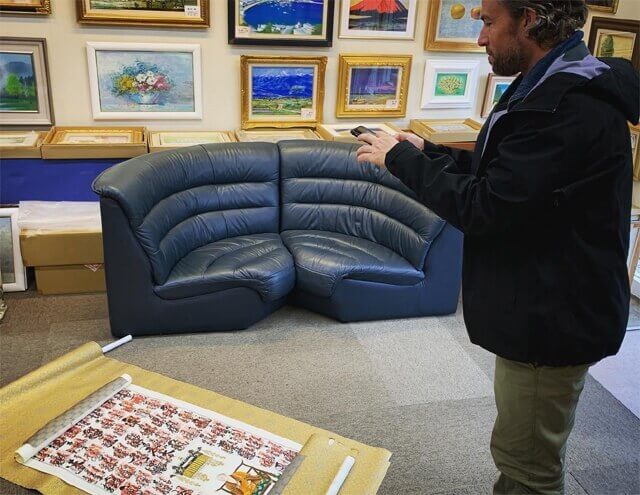
I have been having opportunities to work with Swiss clients several times and I find them amusing to work with as they are such gentlemen and at home in Japanese culture. The client this time was no exception, decent and has a great knowledge of Japanese culture.
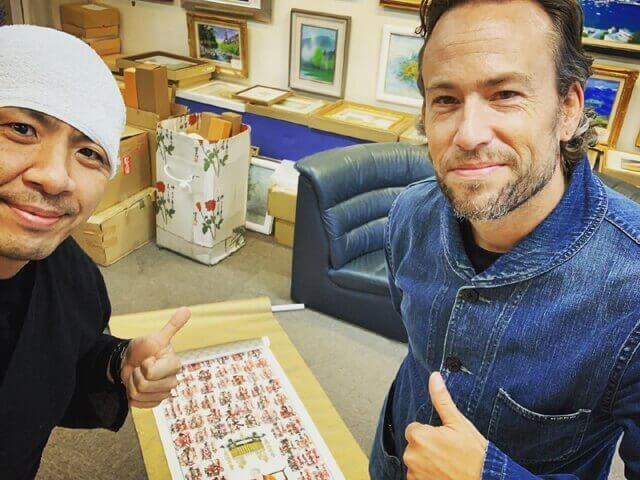
Having a visa for around 3 months the client went sightseeing besides Shikoku region. He seemed to be very much keen on Japanese art as he said he went museum hopping admiring Ukiyoe and Kawanabe Kyōsai. Kawanabe Kyōsai is a popular Japanese-style painter who was active during the Meiji period and whose style of work is dazzlingly skilled and gives an impression similar to Itō Jakuchū has. As we both in favor of the artist, we had so much fun talking about it.
The Uncompromising Shikoku Pilgrimage
After traveling around Japan, the client finally kicked off his Shikoku Pilgrimage that was.., to my surprise, accomplished totally and utterly on foot!! Σ(・□・;)
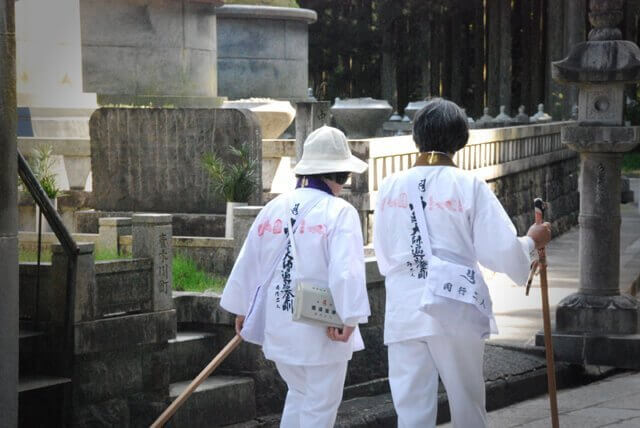
I honestly thought ‘Seriously!? Did he really complete Arukihenro, walking pilgrimage!!’ (lol)
Shikoku Pilgrimage whose route covers about 1200 km is said to take 45 days to walk through even for a man in good health so I was absolutely impressed by the fact a foreign person achieved the henro (pilgrimage) which requires a quite lot of endurance. In many cases, Japanese who has a strong faith attempts but I hardly hear about a foreigner who had a go.
I asked him about the experience, and obviously he seemed to have had a very tough time. (Well, no wonder he had.. )
He told me that having been suffered by blisters on his feet and muscle pains, he actually went Oops!! But he was still happy with being ended up having tougher soles as a result of the repeated bust and healing of his blisters.
He had to buy new shoes because his feet were too swollen to make his shoes tighter.
Moreover, he completed the henro with ‘Jun-uchi’ order. Jun-uchi is a way of visiting all Shikoku Pilgrimage temples in numerical order and one of the hardest ways of Arukihenro as the short cut isn’t an option. Yet, the client was still determined to accomplish with this method. Besides, he courteously visited Mt. Kōya before setting off the henro and when achieved the mangan, which means collecting all goshūins, to address the deity that ‘I am going now.’ and ‘I’ve come back without mishap.’ Even Japanese pilgrims hardly ever carry it out with that perfection and that made his story absolutely amusing.
He mentioned that all in all, he had a whale of time in Shikoku region where beautiful nature and fun activities are offered and the locals are kind. He requested the kakejiku putting a little pressure on us saying that a problem free finish of his kakejiku will complete his journey in Shikoku region.

The client who later on, set off to Tahiti then Bali to enjoy his holiday there before going home told us that it’ll be fine with him if the mounting is finished anytime before he arrives home.
Well how nice. Traveling abroad…Being a foreign culture lover, I’d love to go to Switzerland and visit places like Matterhorn.
He told me that the Arukihenro took him around 60 days.
So I replied to him in wonder ‘How did you manage to take such a long holiday? Even among Japanese, not many people are able to go Arukihenro.’
Then he said ‘Well Japanese people work hard, they are busy bees.’
That made me giggle as the weird notion ‘Japanese are busy’ seems like the Japanese institute which is internationally known.
The Mounted Shikoku Pilgrimage Kakejiku
This is the combination of the mounting fabrics on our recommendation: No. 019 Reiga pattern.
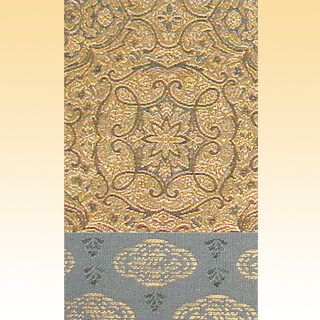
Before ordering, the client already had certain image of patterns of the mounting fabric by researching the ideas. However, he fell in love with our suggestion of the matching of the pattern which he didn’t even expect and agreed on the spot. The finished kakejiku we mounted.
The “kinran” (gold brocade) fabric with an austere, subdued luster has the luxurious and still tranquil ambiance.
Since Shikoku Pilgrimage kakejiku needs space to fit 88 goshūins, the finishing size will be larger than a regular kakejiku. Accordingly, the completed kakejiku brings out a powerful and majestic atmosphere.
The fabric of the client’s choice matching with the gold leaf placed above Kōbō Daishi in the heart of the work magnifies the charm of the kakejiku.
Client’s Feedback
We received the client’s feedback as below. Thank you very much!!
Hello dear friend,
I have received the kakejiku you have mounted and I have no words…. your work is incredibly fantastic! I would like to thank you from the bottom of my heart.
It was very emotional for me to unroll the piece. There are so many memories…It is astonishing. Also the addition of the gold parts makes it even more special.
Thank you for making my Henro experience complete. I am so glad I came to see you.
I will cherish it for the rest of my life.
On The Whole
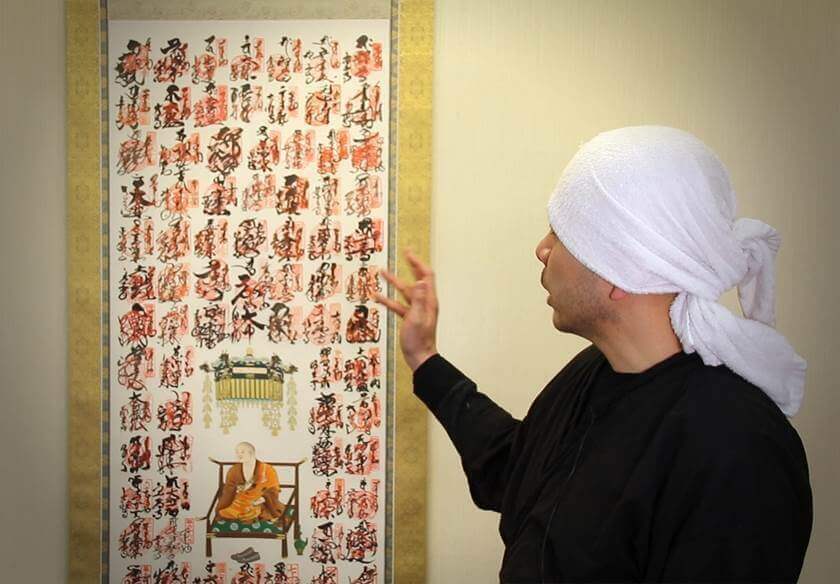
In this modern time, in Japan, scroll mounters like us who has expertise in mounting kakejiku gradually fades away as time goes by. However, given that kakejiku can be the first opportunity of becoming fond of Japan for foreigners like this time, I believe that the importance and role we scroll mounters were given will be reaffirmed with the other aspect.
We will treasure the works requested from foreign clients as well in the meaning of ‘rediscovering Japanese culture’.
Movie: Request for Shikoku Pilgrimage Kakejiku (hanging scroll) from a Swiss Client

